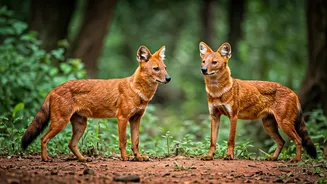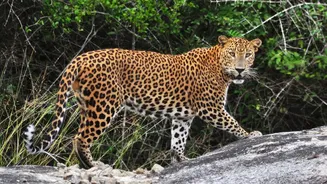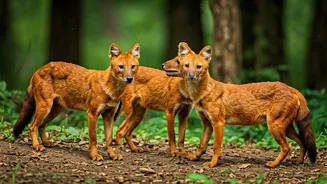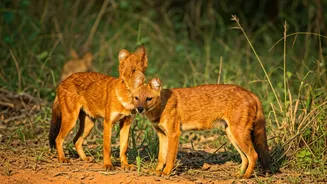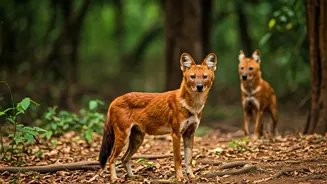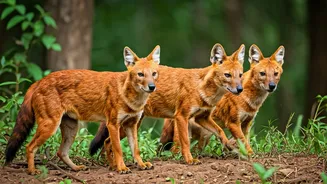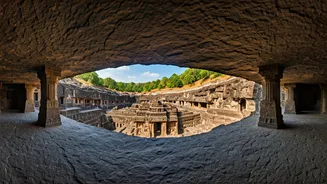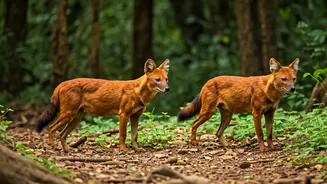Dholes: Endangered Canids
The Asiatic wild dog, scientifically known as Cuon alpinus, faces a dire threat in the wild. Its numbers have dwindled due to habitat loss, prey scarcity,
and conflict with humans. Dholes are social animals that live in packs, often hunting cooperatively to bring down large prey. These canids, which resemble a mix between a dog and a fox, are incredibly important for the ecological balance within their habitats. They help to regulate prey populations and keep ecosystems healthy. The commitment to safeguarding these animals involves comprehensive strategies, from protection of their natural habitats, to promoting co-existence with local communities, which can help ensure the future of the dhole.
Kanha National Park
Kanha National Park, located in Madhya Pradesh, is a key habitat for dholes. The park’s diverse ecosystems, including sal forests and grasslands, offer suitable conditions for these wild dogs. Conservation efforts at Kanha focus on preserving the forest cover and managing prey populations to support the dhole population. Moreover, the park actively involves local communities in conservation projects. Through educational programs and initiatives for sustainable livelihoods, the park seeks to foster a sense of responsibility and encourage human-wildlife harmony. The landscape provides both cover and hunting grounds, making it ideal for the social dynamics of dhole packs.
Pench National Park
Pench National Park, straddling the border of Madhya Pradesh and Maharashtra, is another significant sanctuary for dholes. The park’s mixed-deciduous forests provide excellent cover and prey availability for the dholes. Conservation strategies here include regular monitoring of dhole populations and managing potential threats, such as human-wildlife conflict. The park also focuses on mitigating the impacts of tourism by enforcing strict guidelines and promoting eco-tourism practices. This helps balance visitor experiences with the preservation of natural habitats and the well-being of its wildlife. Pench’s effective management has contributed to the consistent presence and even growth of its dhole population.
Tadoba Andhari Tiger Reserve
Tadoba Andhari Tiger Reserve in Maharashtra is not only famous for its tigers but also supports a healthy population of dholes. The dense forests and varied terrain provide a favorable environment for dholes to thrive. Conservation efforts here focus on the protection of habitat corridors, ensuring that dholes can move freely between different areas. This is vital for maintaining genetic diversity and long-term survival. Tadoba integrates its conservation programs with anti-poaching measures and community outreach. Such collaborations ensure a more effective and sustainable approach to wildlife preservation, while simultaneously boosting local economies through eco-tourism and related ventures.
Bandhavgarh National Park
Bandhavgarh National Park, also located in Madhya Pradesh, offers another sanctuary for dholes. The park's rugged terrain and diverse flora contribute to a suitable habitat for wild dogs. Conservation efforts involve strict habitat management and regular patrolling to curb poaching and illegal activities. Besides habitat protection, the park also supports scientific research to better understand dhole behavior and population dynamics. This scientific backing is crucial for adaptive management practices, enabling conservationists to respond effectively to evolving challenges. The park’s approach ensures that the ecosystem is managed and preserved for future generations.



